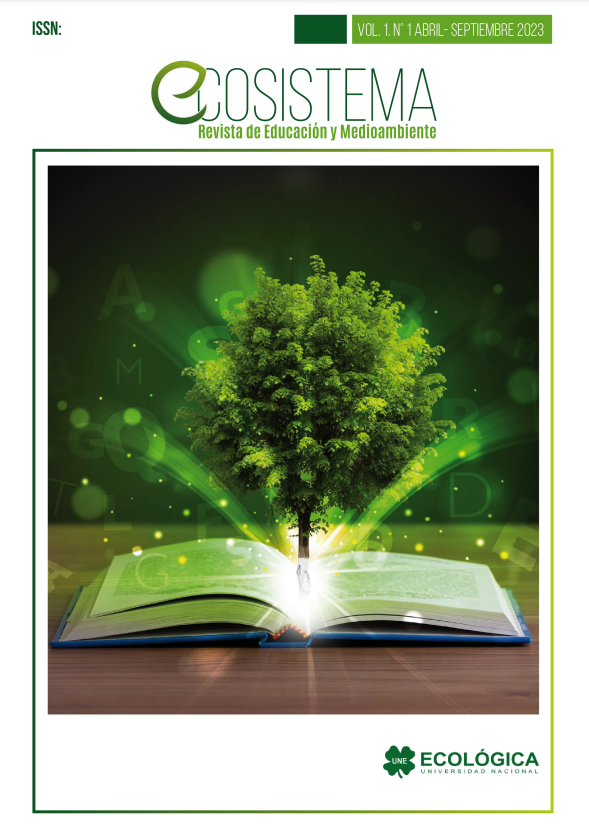Plásticos en los océanos. Un problema global y sus soluciones Plastics in the oceans. A global problem and its solutions
Contenido principal del artículo
La contaminación por plásticos es una amenaza relativamente nueva, la masa de todo el plástico producido hasta el momento es dos veces superior a la biomasa combinada de todos los animales terrestres y marinos. Este estudio tiene como objetivo analizar los presupuestos sobre la contaminación causada por el plástico en los ecosistemas acuáticos como una Estrategia para la conservación del medio ambiente. Se realiza una revisión sistemática de artículos desde 2015 hasta 2021, utilizando bases de datos como Scopus, Scielo, Web of the Science y Dialnet. Los criterios de inclusión abarcaron artículos indexados, mientras que se excluyeron aquellos que no abordaban las incidencias de la problemática objeto de estudio. Los resultados muestran divergencias en las opiniones sobre la contaminación, con importantes repercusiones en la salud humana y los ecosistemas, estos hallazgos ofrecen una perspectiva valiosa para entender las áreas clave que impactan en la contaminación por plástico al océano.
Plastic pollution is a relatively new threat, the mass of all plastic produced so far is twice higher than the combined biomass of all terrestrial and marine animals. This study aims to analyze budgets on pollution caused by plastic in aquatic ecosystems as a strategy for environmental conservation. A systematic review of articles is carried out from 2015 to 2021, using databases such as Scopus, Scielo, Web of the Science and Dialnet. The inclusion criteria covered indexed articles, while those who did not address the incidents of the problem subject to study were excluded. The results show divergences in the opinions on pollution, with important repercussions on human health and ecosystems, these findings offer a valuable perspective to understand the key areas that impact on ocean plastic pollution.
Detalles del artículo

Esta obra está bajo una licencia internacional Creative Commons Atribución-NoComercial-CompartirIgual 4.0.
Referencias
Botterell, Z. et al. (2019). Bioavailability and effects of microplastics on marine zooplankton Environmental Pollution. https://doi.org/10.1016/j.envpol.2018.10.065
Clarke, J. (2011). What is a systematic review [Qué es una revisión sistemática]. In Evidence-Based Nursing (Vol. 14, Issue 3, p. 64). https://doi.org/10.1136/ebn.2011.0049
Escudero, L., y Cortez, A. (2018). Técnicas y métodos cualitativos para la investigación científica. Ediciones UTMACH. http://repositorio.utmachala.edu.ec/bitstream/48000/12501/1/Tecnicas-y-MetodoscualitativosParaInvestigacionCientifica.pdf
Elías, R. (2015). Mar de plástico: Una revisión del plástico en el mar. Revista de Investigación y Desarrollo Pesquero, No. 27, pp. 83-105. Recuperado en: https://www.gob.mx/semarnat/articulos/oceanosinundados-de-plastico
González, M. et al. (2019). Secondary nanoplastics released from a biodegradable microplastic severely impact freshwater environments. Royal Society of Chemistry. DOI: 10.1039/C8EN01427B
González-Fernández, D., et. al., (2021). Floating macrolitter leaked from Europe into the ocean. Nat Sustain 4 (6), 474–483. Recuperado en: https://www.theguardian.com/environment/2021/dec/26/180bninvestment-in-plastic-factories-feeds-global-packaging-binge
Huerta Lwanga, E., Mendoza Vega, J., Ku Quej, V. et al. (2017) Field evidence for transfer of plastic debris along a terrestrial food chain. Sci Rep 7, 14071. https://doi.org/10.1038/s41598-017-14588-2
Lusher, A., Hernandez-Milian, G., Berrow, S., Rogan, E., O’Connor, I., (2018). Incidence of marine debris in cetaceans stranded and bycaught in Ireland: Recent findings and a review of historical knowledge. Environmental Pollution 232 (Supplement C), 467-476. Recuperado en: https://doi.org/10.5380/dma.v35i0.43541
Manterola, C., Astudillo, P., Arias, E. & Claros, N. (2013). Systematic Reviews of the Literature: What Should be Known About Them [Revisiones sistemáticas de La literatura: lo que se debe saber sobre ellas]. Cirugía Española (English Edition), 91(3), 149–155. https://doi.org/10.1016/j.cireng.2013.07.003
Morales-Caselles, C., et. al., (2021). An in shoreoffshore sorting system revealed from global classification of ocean litter. Nat Sustain 4 (6), 484–493. Recuperado en: https://doi.org/10.4060/cb4476.
Morrison, E., et al. (2019). Evaluating The Ocean Cleanup, a marine debris removal project in the North Pacific Gyre, using SWOT analysis. Case Stud. Environ., 2019. 3(1): p. 1-6
Muncke, J., et. al. (2020). Impacts of food contact chemicals on human health: a consensus statement. Environmental Health 19 (1), 25. http://www.serbi.luz.edu.ve/scielo.php?script=sci_arttext&pid=S1315-5182005012000002&lng=en&nrm=iso&tlng=es.
Nyquist, S. (2019). What to do about plastics: An interview with Rachel Meidl. McKinsey & Company Sustainability. Recuperado en: https://www.mckinsey.com/business-functions/sustainability/ourinsights/sustainability-blog/what-to-do-about-plastics-an-interview-with-rachel-meidl)
Padervand, M., et al. (2020). Removal of microplastics from the environment. A review. Environ. Chem. Lett., 18(3): p. 807-828. Recuperado en: DOI: https://doi.org/10.29333/ejmste/108438.
Santillán, M. (2018). Una vida de plástico. Ciencia UNAM. Revista Mundo marino. Recuperado en: http://ciencia.unam.mx/leer/766/una-vida-de-plástico


